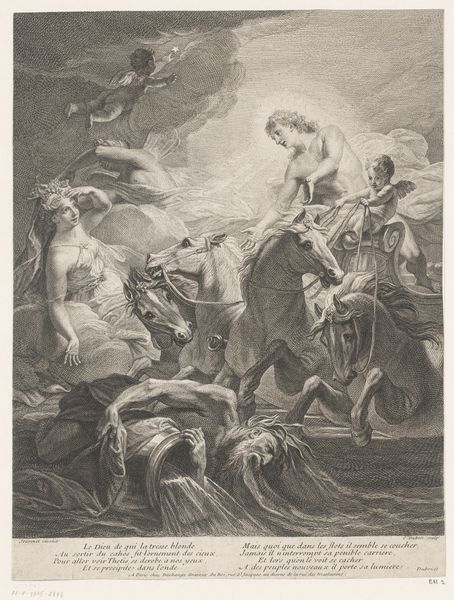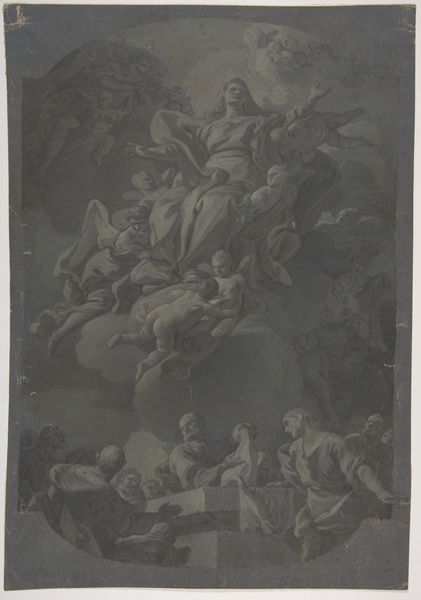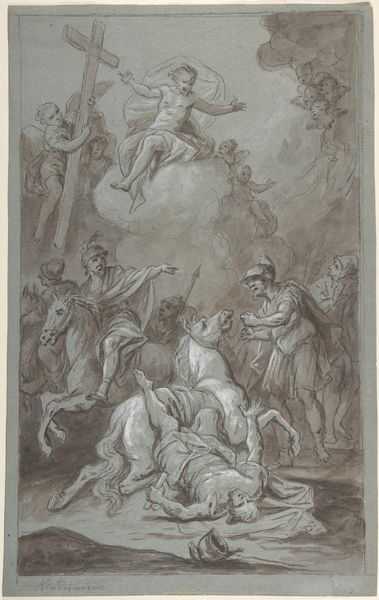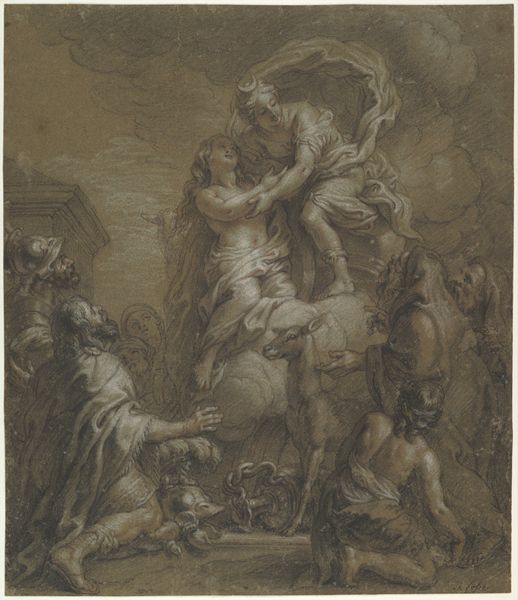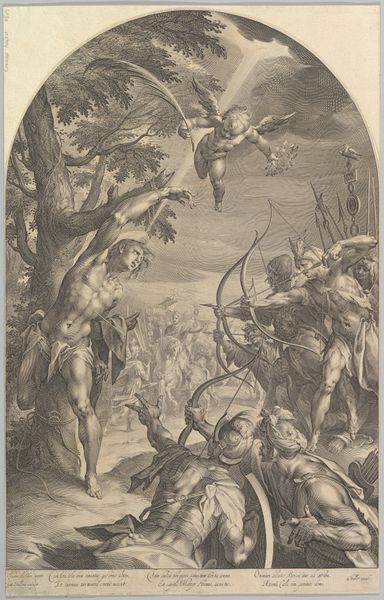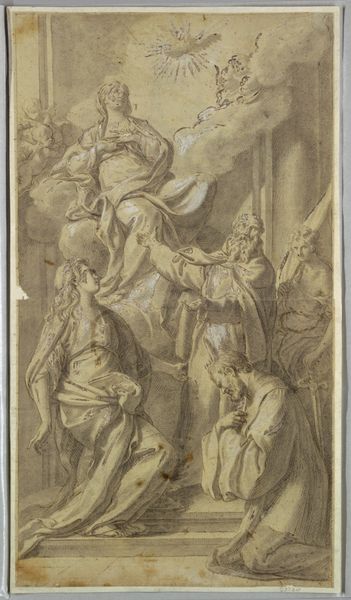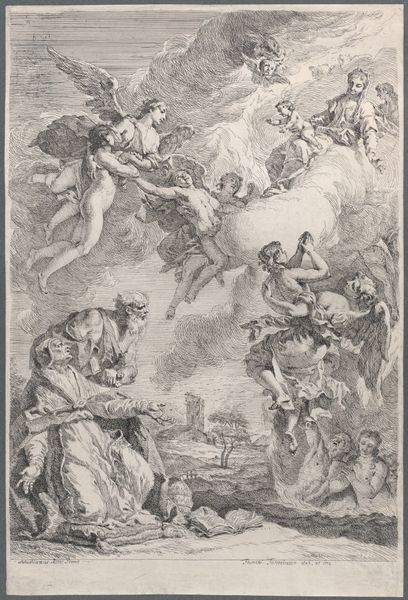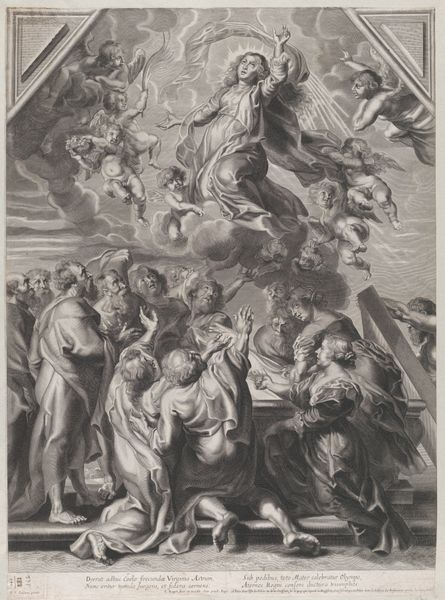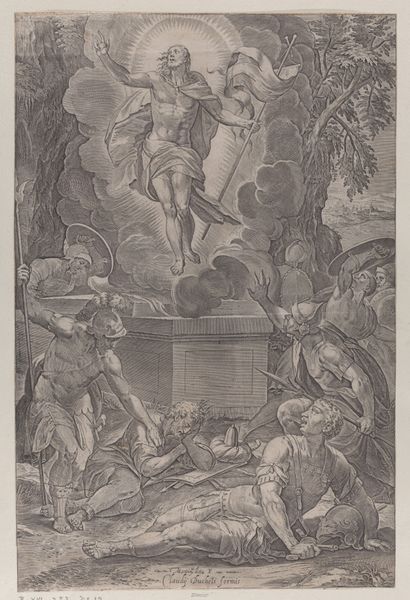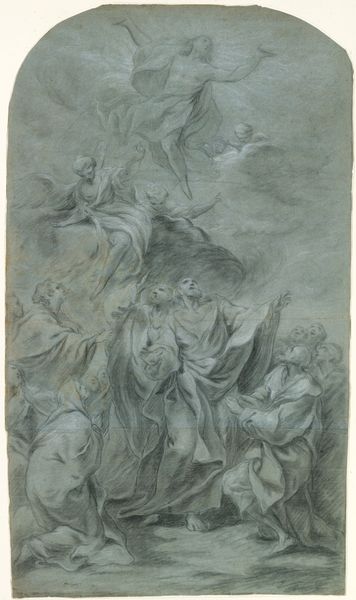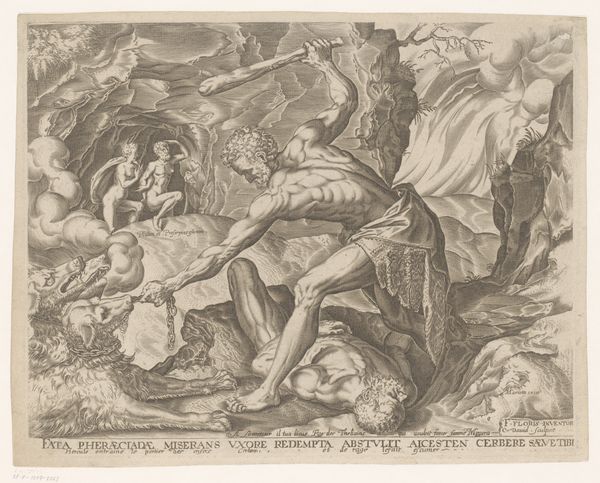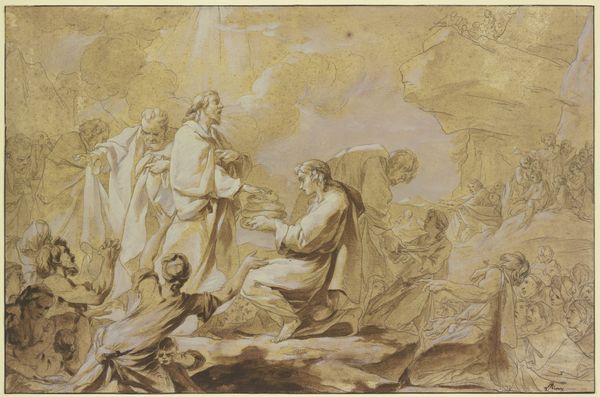
drawing, painting, print, charcoal
#
drawing
#
narrative-art
#
baroque
#
painting
# print
#
landscape
#
charcoal drawing
#
figuration
#
oil painting
#
charcoal
#
history-painting
Dimensions: 15-13/16 x 11-7/8 in. (40.2 x 30.2 cm)
Copyright: Public Domain
Editor: Here we have Felice Torelli's "Death of Saint Peter Martyr," likely created between 1667 and 1748. It seems to be rendered in charcoal and possibly oil, depicting a violent scene in a landscape setting. What really strikes me is the stark contrast and how it adds to the dramatic tension. How do you interpret this work? Curator: This piece operates within a potent intersection of religion, power, and gender during the Baroque era. Think about the narrative itself: Saint Peter Martyr, a Dominican preacher, was assassinated for his outspoken challenges to heresy. But look closer – who commissioned this work, and what political statement were they trying to make? Was this about religious devotion or perhaps subtly challenging societal norms, by presenting male suffering prominently? Editor: That’s fascinating; I hadn’t considered the commissioner's potential motivations. Are you suggesting that these depictions could subtly question dominant ideologies? Curator: Absolutely. Art is rarely created in a vacuum. Consider the role of the fleeing figures: who are they? Are they meant to exemplify feminine weakness in the face of violence, or are they symbols of a community robbed of its leader and forced into hiding? The cherubs above may represent the divine justification of the saint's violent demise, thus reinforcing the power structures in place. This wasn't just about piety, it was also a tool for asserting social dominance through religious narratives. Editor: That definitely changes how I see it. The painting becomes a stage for a much broader sociopolitical conversation, it is way beyond just one man's death. Curator: Precisely. It’s a visual echo of a very specific time, echoing struggles over religious and secular authority. Looking through this intersectional lens allows us to excavate those historical tensions within what might appear as a simple religious scene. Editor: This has definitely pushed me to consider all sorts of potential implications embedded in this artwork! Thanks so much.
Comments
No comments
Be the first to comment and join the conversation on the ultimate creative platform.
